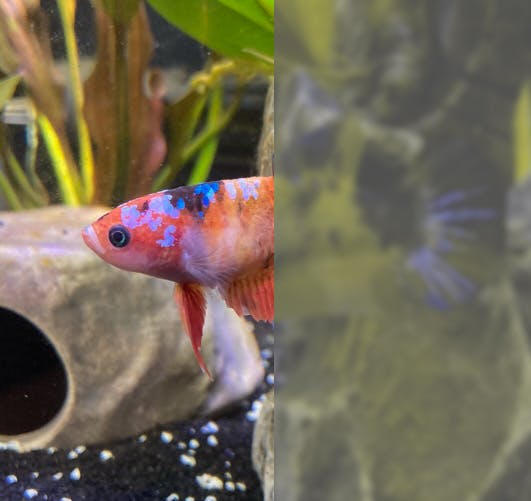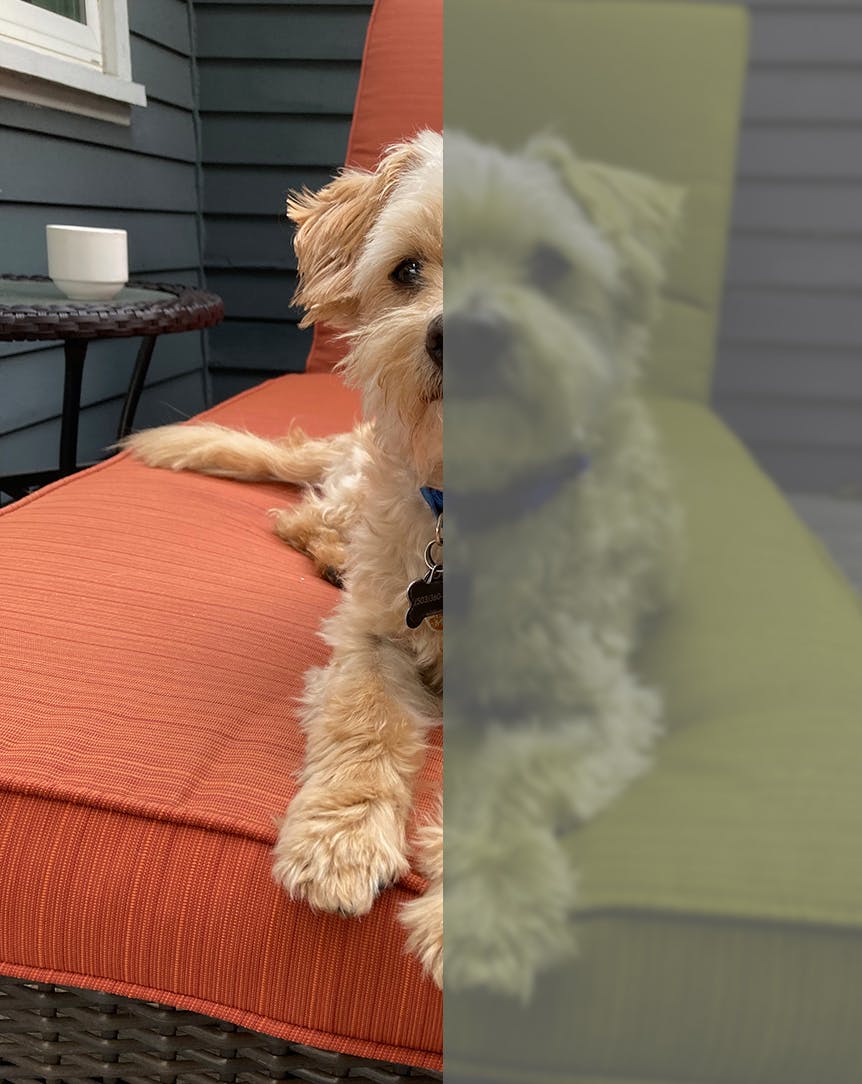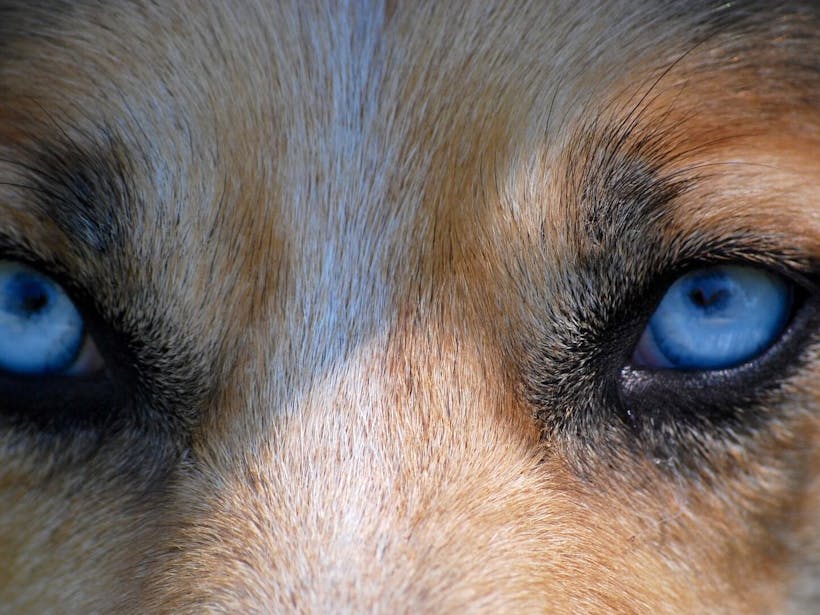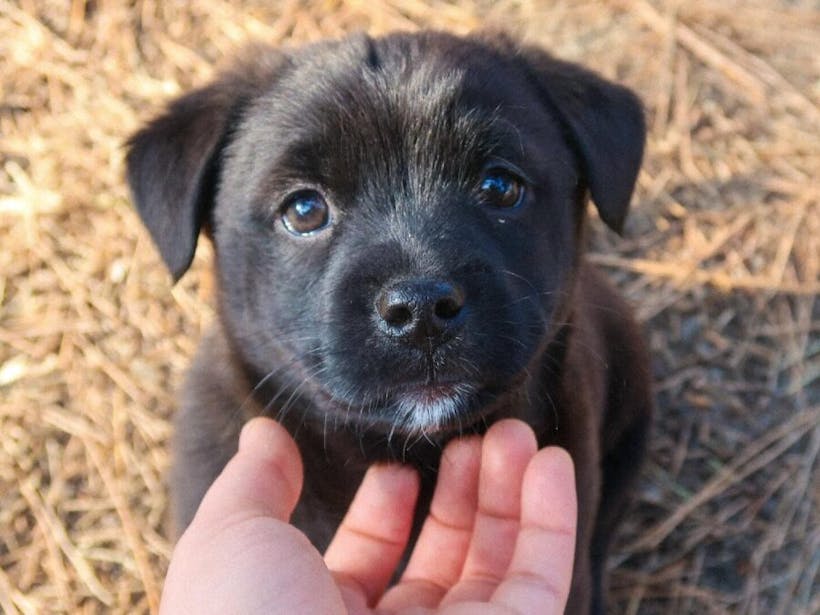You might have heard the common myth that dogs see the world in black and white. But the truth is they can distinguish certain colors—just not the rich rainbow that humans experience. Read on to find out the scoop on color blindness and what colors your dog can (and can’t) see.
What is color blindness?
Color blindness in humans—also known as color vision deficiency—is a condition that causes one to see colors differently than most people. The most common type of color blindness is an inability to tell the difference between certain colors. For example, some people with color vision deficiency cannot distinguish between red and green, while others cannot tell blue from yellow. But color blindness also encompasses difficulty seeing shades and brightness of colors. Although quite rare, there is also a version of color blindness that prevents a person from seeing any color at all.
So are dogs color blind? The short answer is yes. Unlike humans who may or may not have a color vision deficiency, dogs definitely are colorblind. But they don’t have the type of color blindness that allows them to see only in black and white. Wondering what colors dogs see? Studies suggest the colors dogs see best are shades of yellow, grey, and blue.
The cause of color blindness in dogs
Ready for a quick science lesson? As you may recall from your high school anatomy class, human eyes contain two main cell types: Rods perceive light and motion, and cones detect colors. This is true for most other mammals (including dogs), too. But the number of rods and cones vary significantly among species.
Humans are trichromats, meaning our eyes have three types of cones—allowing most of us to see a wide spectrum of colors. Dogs, on the other hand, have only two types of cones, resulting in dichromatic vision and a smaller range of discernable colors.
As a trade-off, their eyes have more rods, which help them detect subtle or distant movements and see in the dark better than we can. (That’s a pretty useful skill when your key responsibilities include pest control and hunting, as has been the case for many dogs throughout history.)
Dog eyes also have the tapetum layer—which reflects light back through the retina—and larger pupils, enhancing their night vision ever further. Plus, they can see more at one time thanks to wide-set eyes that provide a broader span of peripheral vision.
Check out our related post for more info on the degree to which dogs have night vision.
Can dogs see colors like humans do?
You might be wondering, “If dogs can only see yellow, blue, and grey, what do other colors look like to them? The green lawn, that red ball, those purple flowers…”
Well, the good news is that your pup certainly still sees all those things. The colors just aren’t quite the same as how you perceive them. For example, greens and reds might look like varying shades of an anemic, greyish yellow, whereas purple could appear to be blue.
They say a picture is worth a thousand words. So let’s look at a few examples of how dogs see color compared to humans.
First, let’s look at the full spectrum of colors that humans see, followed by an approximation of the range of colors dogs can see.

For a better understanding, take a look at the following photographs. These images, created with Dog Vision, use a split screen to demonstrate the difference between how a human (left side of photo) and a dog (right side of photo) typically view colors.



The takeaway? Opt for toys that come in bold yellows and blues. Your dog will probably find them more appealing. Plus, they’ll be less likely to get lost among the lawn.
Fun fact: In canine agility sports, dogs perform best when obstacles are either blue or yellow (or both)—likely because they can see those most clearly.
How dogs see the world
Your dog’s other senses make up for any disadvantages of color blindness.
In addition to being a little less vibrant, the world your dog sees is also fuzzier around the edges. Research suggests dogs are fairly nearsighted—having as little as 20% the visual acuity of humans.

In addition to being a little less vibrant, the world your dog sees is also fuzzier around the edges. Research suggests dogs are fairly nearsighted—having as little as 20% the visual acuity of humans.
But don’t worry about them missing out. They sense the world quite powerfully in ways we can’t. For example, experts estimate that your dog’s nose is 10,000 to 100,000x more accurate than yours. (Can you even imagine?) That allows them to detect phenomena you’d never expect to identify by smell—such as a person’s emotional state. Coupled with sensitive ears, such a sniffer essentially gives your dog superpowers.
Rest assured, they ultimately “see” much more than humans do.
Want to know more about your dog’s eyes?
To help you plan for your pup’s needs, the Wisdom Panel™ Premium dog DNA test screens for dozens of genetic eye disorders—including various forms of retinal atrophy and degeneration.
Learn More














